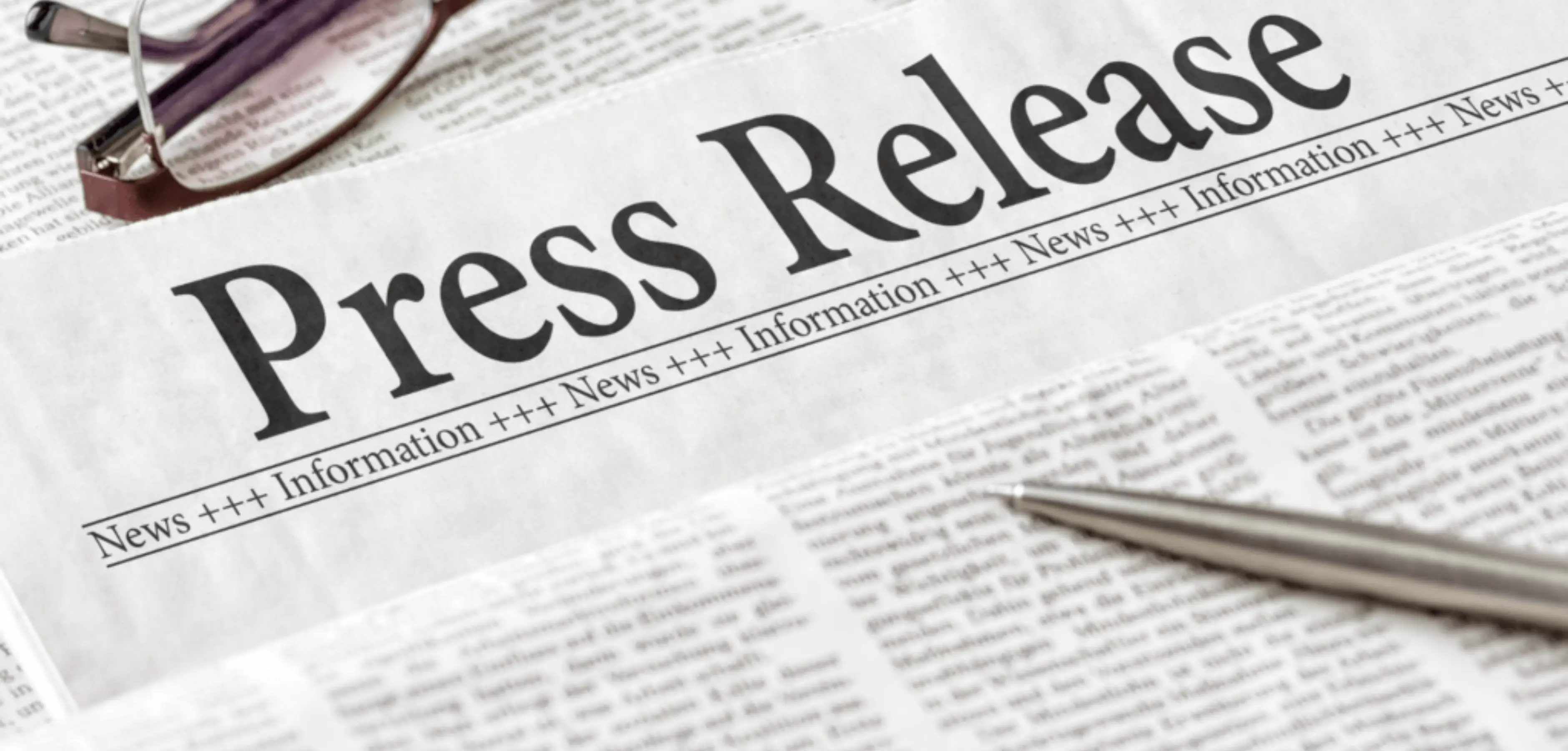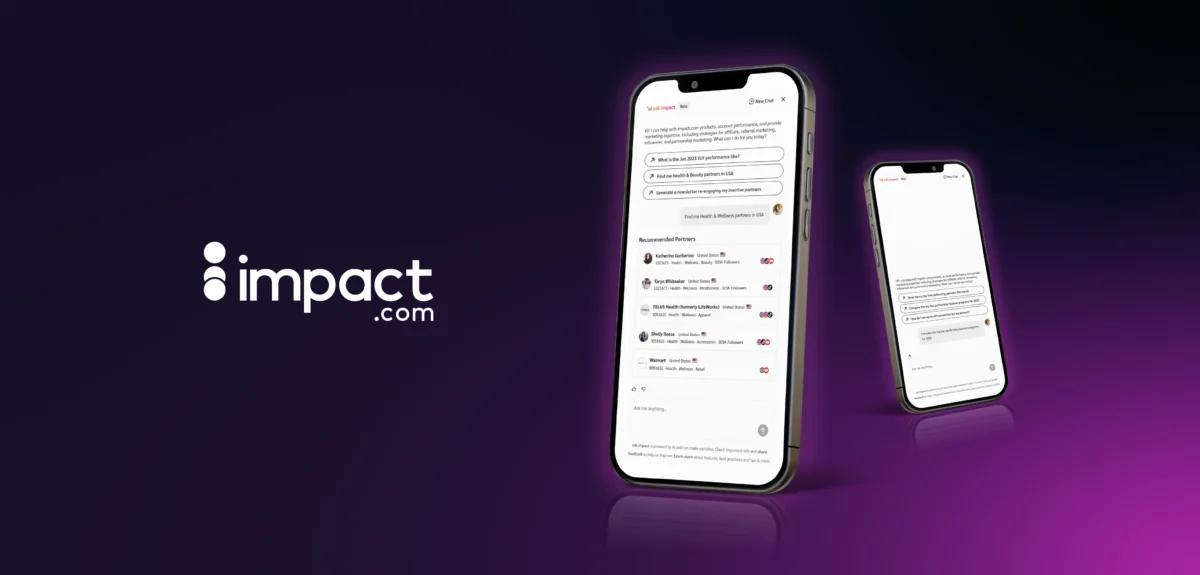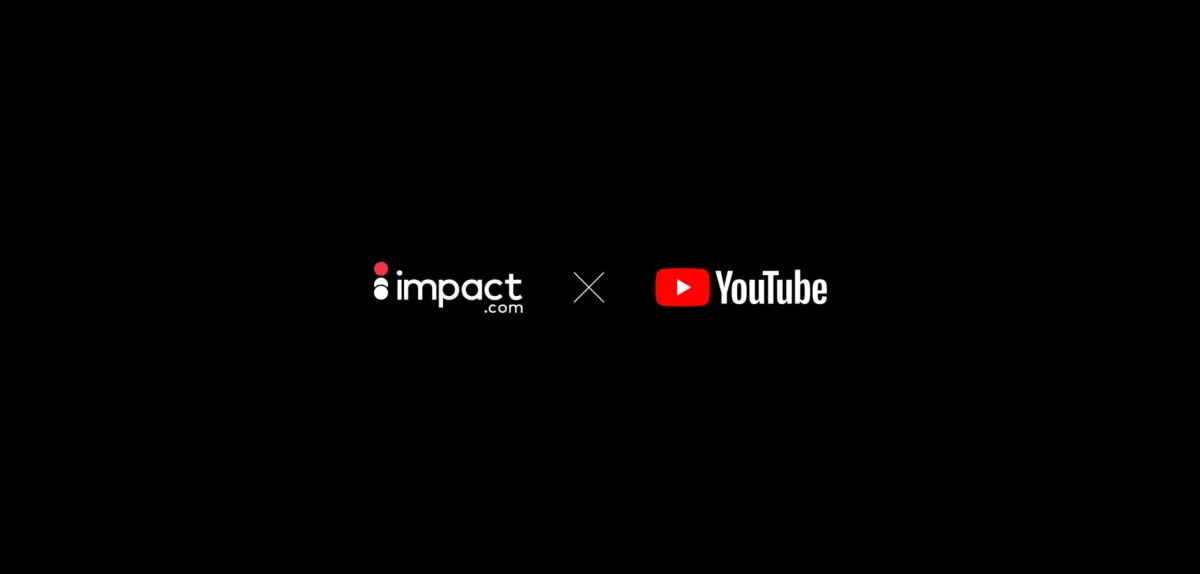Struggling to get attention from media outlets? Press outreach can feel like shouting at a rock concert—nobody can hear you. But if you craft a solid press release, you can cut through the noise and land a spot on center stage.
Journalists love that press releases help them generate content. However, 73 percent reported that fewer than a quarter of the pitches were relevant, so most press releases were ignored.
This disconnect allows brands to increase their chances of media coverage by revisiting how they craft and pitch press releases.
Learn what eight common press release mistakes to avoid—and what to do instead—to earn more valuable media opportunities.
Key takeaways
- Lead with crucial information upfront to engage reporters.
- Make press releases concise to keep journalists engaged.
- Ensure your story is timely, relevant, and impactful to get featured.
- Personalize your distribution to publications to stay relevant to reporters.
1. Neglecting the broader context
Even the most exciting announcement can fall flat if it floats in space like a lonely satellite. Think of context as the bridge between your announcement and the world it lives in. Maybe your new product launch addresses a growing market challenge that keeps CEOs awake at night.
Or perhaps new first-party research reflects a seismic shift in your industry’s direction. Without these vital connections, even breakthrough news can seem significant to your company, but ultimately lost on its audience.
How to fix it:
- Link your news to industry trends or challenges.
- Highlight potential impacts on your sector or audience.
- Include relevant statistics or background information.

For example, without context, a press release might read: “XYZ Tech launches new software update.”
With context, it’s more appealing: “As remote work surges, XYZ Tech’s new technology tackles rising cybersecurity threats—addressing a 300 percent increase in attacks on remote workers since 2020.”
2. Issuing non-newsworthy content
The most magnetic press releases tap into the pulse of the moment, offering fresh perspectives on trending conversations or unveiling solutions to burning challenges. Think less “Look at us” and more “Here’s what matters.”
When your story resonates with a publication’s readers, you transform from just another voice clamoring for attention into a valuable contributor to the dialogue.
To identify newsworthy stories:
- Focus on how you’re addressing industry challenges.
- Connect your story to recent industry developments and anticipated future trends.
- Consider initiatives beyond your niche that might appeal to media outlets—such as conducting original research or leveraging first-party data to uncover industry trends, customer insights, or emerging opportunities.
- Gauge interest by getting opinions from outside your organization.

Social media management company Buffer draws media attention by using proprietary data on remote work.
Head of Communications and Content Hailley Griffis says, “I ran a survey to get data on remote workers, and I used that data to pitch it to media contacts to get us press mentions.”
This data helps Buffer stand out and build media relationships outside any product announcements.
3. Burying the lede
Five seconds. That’s all you get—a heartbeat of time while a journalist’s cursor hovers over your release. Think of it as speed dating for news: you either spark interest instantly or lose your chance forever.
Techniques for a strong lede:
- Summarize your news in 1–2 sentences using clear, concise language.
- Answer the five W’s (who, what, when, where, why).
- Lead with the most important (and interesting) aspect.

A weak lede would read:
“XYZ Company, a leader in cloud computing solutions, is pleased to announce several updates to its product lineup, including an AI-powered cloud security system, which will be rolled out over the coming months.”
It’s vague, lacks importance, and requires reporters to keep reading to find out why they should care—but they’re not going to do that.
A better lede captures attention quickly with specifics:
“XYZ Company unveils AI-powered cloud security system that detects cyber threats in real-time, potentially saving businesses millions in prevented data breaches.”
4. Overlooking distribution strategy
Poor distribution damages media relationships and harms your ability to get press coverage, as 77 percent of journalists block PR pros who send irrelevant pitches.
For a better distribution strategy:
- Stick to relevant publications for the news you’re sharing.
- Make it clear in your email to each journalist why your story fits their beat.
- Consider reputable wire services for broader reach.
Consider using tools like Cision or Meltwater to amplify stories and scale outreach.
5. Poor timing
Timing is everything in the press release game. Launch it while journalists juggle quarterly earnings reports, and it will vanish into the digital void. Smart PR pros read the room – and the calendar. They look for those sweet spots when their story can own the conversation, not compete with it.
To optimize your timing:
- Monitor industry news and major events to ensure your topic is relevant—or delay pitches as necessary.
- Avoid holidays or known busy periods.
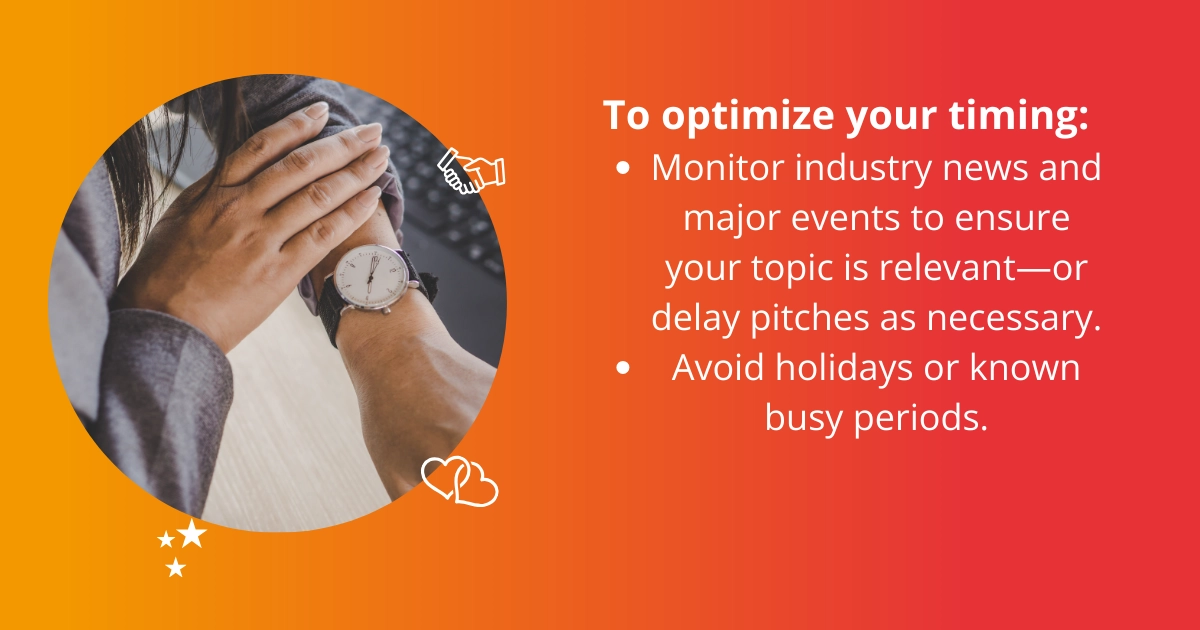
For example, announcing a sustainability initiative in November will likely get drowned out by Thanksgiving (in the US) and Black Friday stories.
But in April, the media will actively seek stories like this in anticipation of Earth Day.
6. Information overload
Picture a journalist’s inbox: hundreds of press releases compete for attention. In this chaos, your lengthy, meandering release forces them to wade through paragraphs of fluff to uncover the story.
When you bury your news under an avalanche of unnecessary details, you’re essentially writing your own rejection letter. Keep your message laser-focused, like a precision instrument. Every sentence should earn its place, driving home your central point with the efficiency of a master storyteller.
How to write a concise, impactful press release:
- Focus on your core news item and its immediate impact.
- Aim for one page (500 words max).
- Use an inverted pyramid format to prioritize the most important information first and add context as you go.
- Craft a brief, attention-grabbing headline (5–7 words) that clearly conveys the story.
- Only include quotes that add value (1–2 max).
- Consider using bullet points to make your press release skimmable.
7. Using jargon or hyperbole
Industry jargon might make you sound knowledgeable in the boardroom, but it’s kryptonite to journalists and readers. Every technical term or acronym you include builds another barrier between your story and its audience.
Even worse are those sweeping, unsubstantiated claims—you know the ones: “revolutionary,” “world-class,” “best-in-breed.” These empty superlatives set off alarm bells for journalists, who’ve seen thousands of companies crown themselves industry kings.
Instead of building credibility, these grandiose claims chip away at your reputation faster than a disgruntled customer’s tweet.
For clear, accessible writing:
- Write in plain language, avoiding industry jargon readers might not understand.
- Define necessary technical terms.
- Avoid unverifiable claims.
- Back claims you make with valid data.
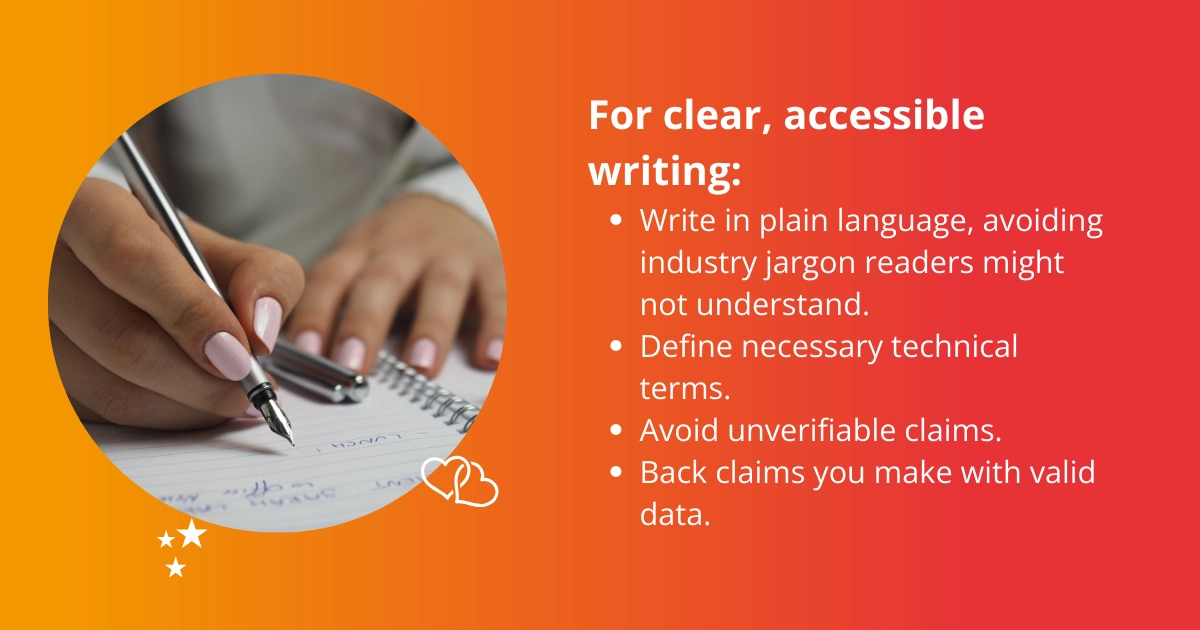
This example is riddled with unverifiable claims and jargon: “Company XYZ’s cutting-edge SaaS platform leverages AI-driven algorithms to optimize user acquisition funnels, resulting in an unprecedented paradigm shift in CLV.”
To make it more accessible, it can be rewritten: “Company XYZ’s latest software release uses artificial intelligence to help businesses attract and retain more customers, helping grow revenue and increase long-term profitability.”
8. Neglecting visuals
Seventy-two percent of journalists use images provided by a brand. They often need images for each story, so including one will save them time and make your news more likely to be picked up.
Consider including:
- High-quality photographs that add context to your story.
- Infographics or charts that illustrate data.
- Video clips that show an aspect of your story in action.
Ensure any visuals are high-resolution and tie directly to your story.
Review your press release strategy
Great press releases can transform your brand’s story into headlines. Too often, though, promising news is buried under common mistakes that send releases straight to journalists’ trash folders.
Want to rise above the noise? Learn to sidestep these pitfalls, and you’ll craft the kind of compelling releases that catch media attention. When you master this essential skill, you do more than write – you open doors to coverage that amplifies your message across channels.
Remember to:
- Connect your news to your industry’s broader context.
- Stick to stories that will interest readers outside your company.
- Establish an engaging lede.
- Target relevant publications during outreach.
- Time your release appropriately, considering industry news, major events, and holidays.
- Focus your press release on one core story.
- Write in accessible language, avoiding jargon and hyperbole.
- Include visuals to support your story.
These tips help you turn overlooked pitches into headline-worthy stories. Lead with the most compelling details, keep your releases concise, focus on timely and impactful angles, and tailor your outreach to resonate with each publication.
